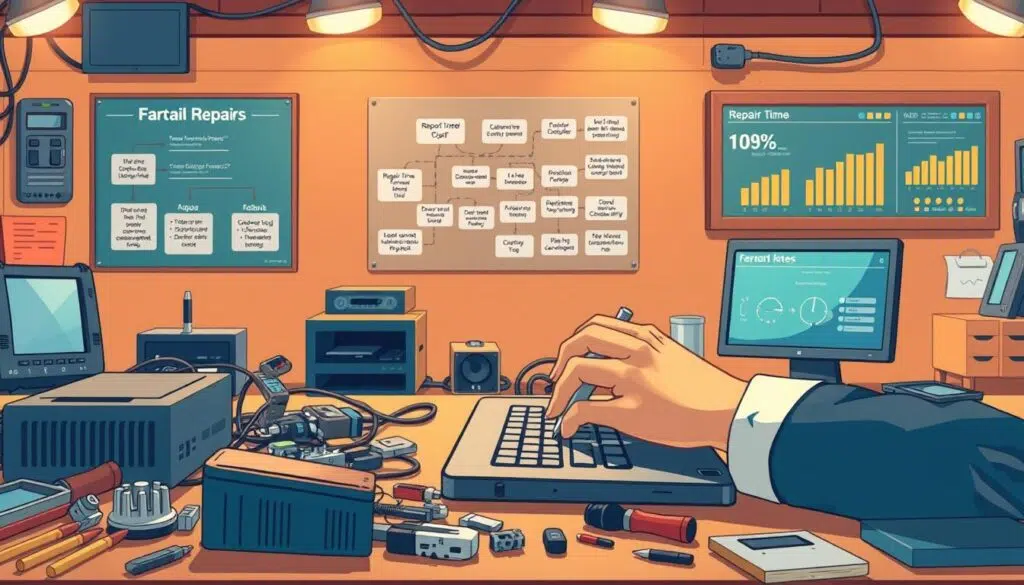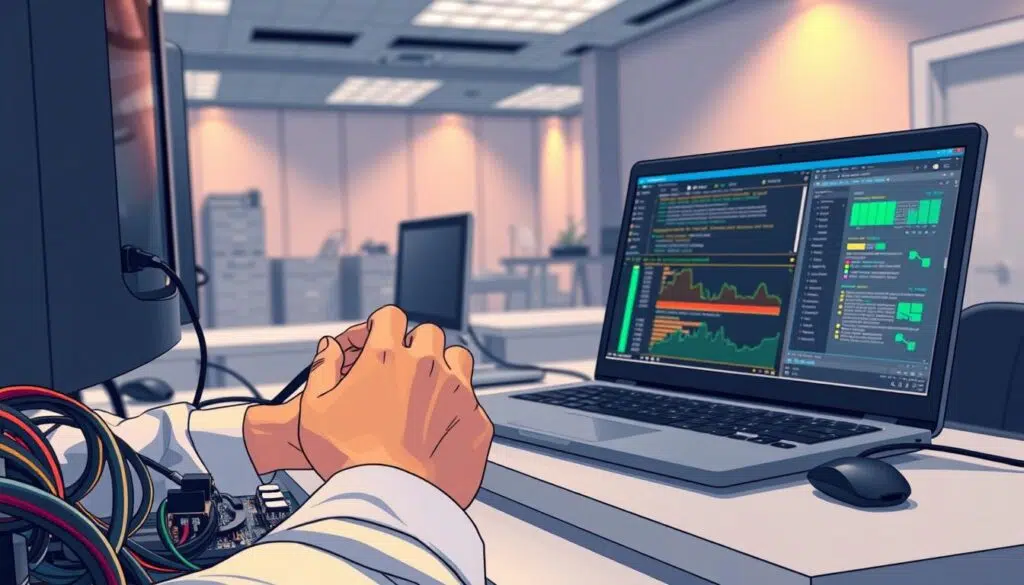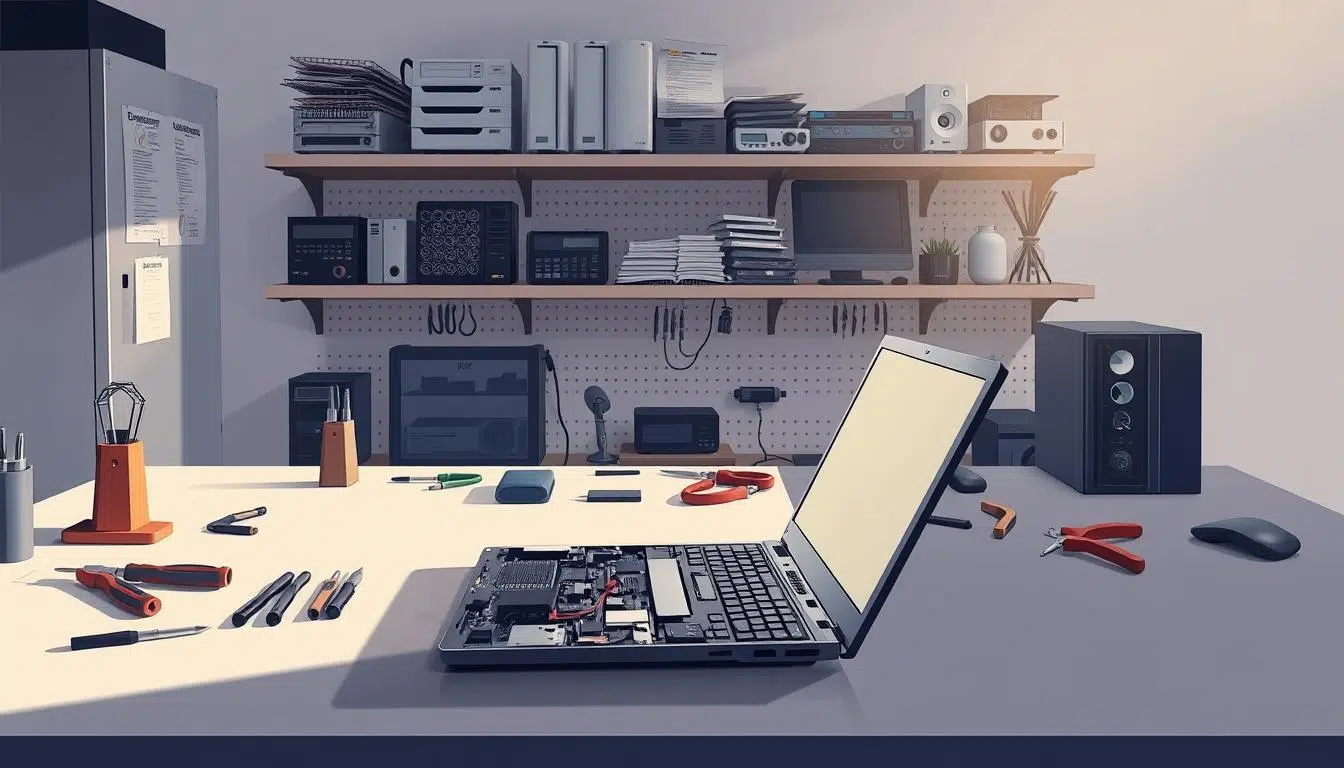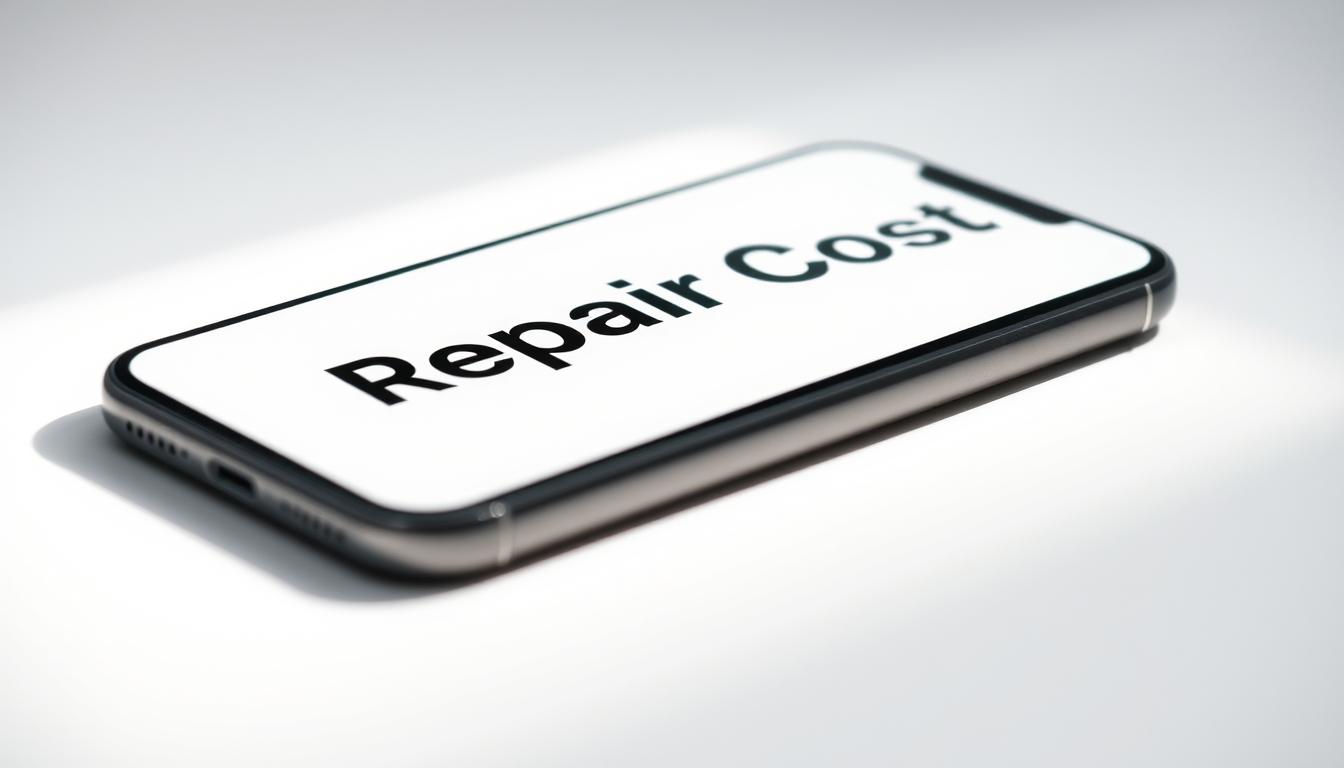Ever wondered why fixing your computer takes so long? Yet, others get theirs fixed quickly? Knowing how long it takes to fix a computer is key, for those who use it every day. The computer repair time frame changes a lot. It depends on the problem, parts needed, and the repair shop’s workload.
Simple fixes can be done in a day or less. But, complex issues might take days or even weeks. Knowing this helps you plan better and make smart choices about repairs. We’ll look at what affects fixing computers quickly, so you know what to expect. For more on repair times, check out this guide on fixing PCs: how long it takes to fix a.
Key Takeaways
- Repair duration varies from under 1 hour for simple software fixes to several weeks for complex hardware issues.
- Parts availability significantly affects the overall time required for repairs.
- Understanding your computer’s specific problems can aid in setting realistic expectations.
- Local repair shops may offer expedited services for urgent needs.
- Specialized repair services can often complete repairs more efficiently due to their expertise.
Understanding the Repair Process
The computer repair process has several stages. It starts with assessment and diagnosis. Technicians use special tools and software to find the problem. This step can take a few minutes to several hours, depending on the issue.
If the problem is simple, like a software glitch, it might be fixed in a few hours. But complex problems, like hardware failures, need more time. Managing expectations is key for a smooth repair experience.
Assessment and Diagnosis
After the technician checks the problem, they diagnose it to confirm the issues. This step is important to decide how to fix it. It affects how long the repair will take.
Minor software fixes can take one to three days. But, complex hardware issues might take longer. The technician’s skill and experience help speed up this step.
Parts Availability
How fast a repair is done depends on parts availability. If the needed parts are easy to get, the repair goes faster. For common fixes like RAM upgrades or hard drive replacements, the time is shorter.
But, if rare parts are needed, it might take longer. This can delay the repair and affect customer satisfaction.
Complexity of the Issue
The complexity of the problem also affects the repair time. Simple software issues might be fixed in a few hours. But, serious problems like hardware failures or virus infections can take days.
It’s important to talk clearly with service providers. This helps keep customers informed about any delays and manages their expectations.
Average Repair Time for Different Issues
The time it takes to fix a computer depends on the problem. Knowing these times helps set realistic expectations. Issues fall into three main categories: software, hardware, and virus or malware problems. Each has its own complexity and fix time.
Software Issues
Software problems, like system errors or app crashes, usually take 30 minutes to 2 hours to fix. This is because software issues are often simple. Keeping your software up to date and using maintenance services can prevent many problems.
Hardware Issues
Fixing hardware problems can take 1 to 3 hours for common issues like screen or battery replacements. More serious hardware failures might take 5-10 days. Regular maintenance can help your equipment last longer and work better.
Virus and Malware Problems
Dealing with viruses or malware can take 1 hour to a day, depending on the problem’s severity. Experts use quick diagnosis methods to fix your computer fast. For more information on repair times, check out this resource.
Factors Influencing Repair Time
The time it takes to fix a computer can change a lot. Knowing what affects it helps people know what to expect. Things like the skill of the technician, the repair shop, and how urgent the repair are key. These factors all play a part in how fast a computer can be fixed.
Technician Experience
How long it takes to fix a computer depends a lot on the technician. More experienced techs can solve problems faster. They know how to handle many issues quickly, which means less time waiting for customers.
On the other hand, newer techs might take longer. They need to learn more and might not be as sure about fixing complex problems.
Type of Repair Shop
The kind of repair shop also affects how long repairs take. Smaller, independent shops usually work faster on common problems than big corporate centers. Local shops might focus on urgent repairs, making things more efficient. Choosing a local technician can mean quicker service because they have fewer customers and can give more personal attention.
Customer Prioritization
How a repair shop handles customers can also change repair times. Some shops fix problems as they come in, while others rush urgent ones. If customers explain their problems well, techs can work faster. Good communication helps meet needs quickly and well.

Quick Fixes vs. Comprehensive Repairs
Knowing the difference between quick fixes and comprehensive repairs is key. Quick fixes solve simple problems fast. On the other hand, detailed repairs take longer and require more effort.
Situations for Quick Fixes
Quick fixes are perfect for small issues. They include software updates and basic hardware tweaks. For instance, fixing software problems or removing viruses usually takes 1-3 hours.
Replacing parts like RAM or hard drives can be done in 1-2 hours. These repairs often finish in a day, helping users quickly.
Comprehensive Repair Scenarios
Comprehensive repairs need more time and effort. They involve complex issues like motherboard failures or big data recovery. These can take hours to days, depending on the problem’s severity.
Even simple problems can get complicated if rare parts are needed. This can cause delays due to shipping or inventory issues. Knowing this helps customers understand their repair journey better. For more on the repair process, check out this guide.

Choosing the Right Repair Shop
Choosing a repair shop is key to a good repair experience. It’s important to look at the shop’s reputation. People often check online reviews and ask friends for advice.
A good reputation means the shop is reliable and skilled. This makes it easier to know when your computer will be fixed.
Reputation and Reviews
Many people look at Yelp to find a repair shop. About 70% of consumers read online reviews. High ratings show a shop is trustworthy and cares about quick service.
Listening to what others say can help you find a good technician. They should make sure you’re happy with the service.
Certifications and Expertise
It’s best to choose a certified technician. A survey shows 85% of customers want certified techs with experience. Their skills affect the quality and speed of repairs.
Look for shops that show off their certifications. This shows they’re qualified and serious about their work.
Phone Repair & More as a Top Choice
Phone Repair & More is a top choice for service. They fix devices fast and offer many services. They use real parts to avoid future problems.
Their prices are clear, and they promise no charge if they can’t fix it. This shop shows the value of a good reputation and reliable service.
Conclusion: Managing Expectations
Managing your expectations is key when getting your computer fixed. Talking clearly with your technician makes things go smoother. By telling them exactly what’s wrong and when, they can fix it faster.
Communicating with Your Technician
Talking openly with your repair tech is important. It helps both of you understand the problem better. Knowing how long repairs take helps you plan your time better.
Understanding Timeframes in Repairs
Knowing how long repairs take helps you plan better. Simple fixes can be quick, but complex ones take longer. This knowledge helps you set the right expectations and plan your time wisely. For more on repair services, check out this guide on Dell computer repair.




